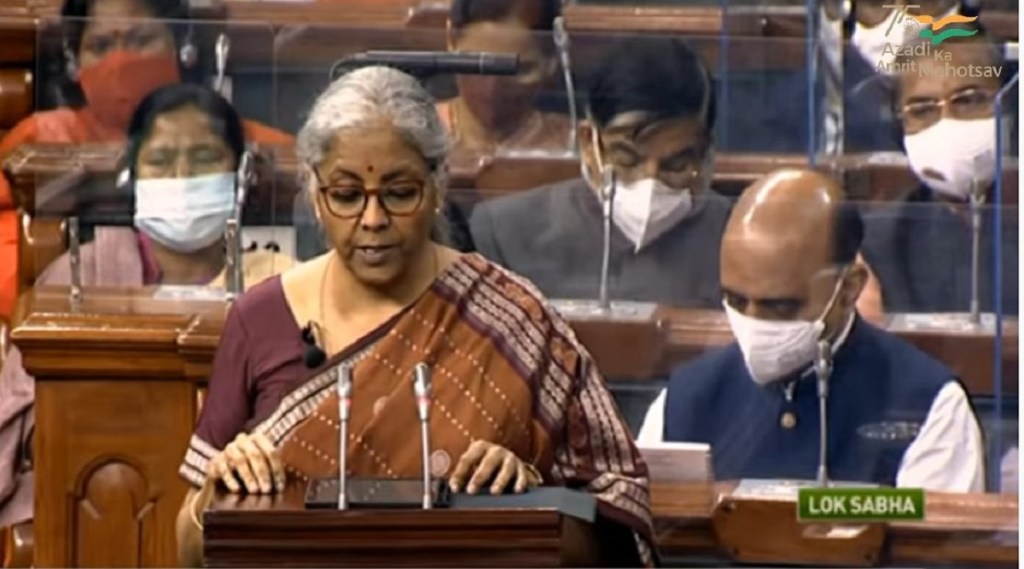By Upasna Bhardwaj
FY2023 Union Budget rightly and expectedly has prioritised growth over aggressive fiscal consolidation through an inclusive approach of incentivising domestic manufacturing, infrastructure impetus, transparency and policy stability. The government has budgeted the FY23 fiscal deficit at 6.4% of GDP from a 6.9% estimated in FY22.
We see tax collections in 4QFY22 to be higher than the revised estimates but the uncertainty with regard to divestment proceeds may have prompted the government to keep some buffers for FY22RE. For FY23, the focus of the Budget has been correctly more on the supply-side reforms with the objective of pushing the investment cycle in order to eventually crowd-in private investment. The government has budgeted a 24% increase in capital expenditure to Rs 7.5 trillion for FY2023 with housing, railways and roads witnessing larger allocation. Notably, the centre has provisioned for Rs 1 trillion of support to states as long-term interest free loans to incentivise further capex. On the positive side, the mix of expenditure has continued to move away from revenue to capital. The broader measure of capital spending (Centres’ budgeted capex, Grants in Aid for creation of assets and PSU capex) is expected to improve to 6% of GDP in FY23 compared to 5.8% this year while the revenue expenditure (adjusted for grants for capital asset creation) is expected to fall to 11.2% of GDP from estimated 12.6% in FY22RE.
While the capex thrust is a clear positive for the economy, much of the multiplier impact will depend on the timely execution and implementation– both by the Centre and the States.
Furthermore, supporting the ongoing Make in India theme and its commitment for climate change, the government has increased the PLI scheme allocation for solar PV module manufacturing. The government has also increased the allocation to education by 18% for FY23, even though the allocation to the healthcare sector is expected to be marginally lower ((-) 2%). Further supporting the sectors continuing to reel post the pandemic, the Emergency Credit Line guarantee scheme (ECLGS) has been extended by a year with an increase in allocation by Rs 500bn to Rs 5tn.
While the pro-growth expansionary Budget provides comfort for long-term sustainable growth trends, the consequent heavy bond supply is expected to weigh heavily on market sentiments. Higher-than-expected market borrowing along with absence of clarity on global bond index inclusion has unnerved the bond market. The gap between supply and demand of SLR bonds is expected to widen to worrisome levels (our estimate of excess supply is close to Rs 6 trillion). In a policy reversal cycle, RBI’s ability to aggressively support the bond market through OMO purchases remains limited. Although, at such elevated crude oil prices and absence of FPI flows, the negative balance of payment could provide some window for OMO purchases, but the magnitude will be restricted.
The tightening global financial conditions, elevated crude oil prices, RBI’s policy normalisation and the heavy supply concerns is clearly shifting the 10-year yield towards 7.25-7.5% range. As the far end of the yield curve is expected to remain heavily weighed down by excess supply, the near end is likely to be guided by monetary and liquidity normalization measures. With domestic growth on a relatively better footing, we expect the RBI to revert its focus on reining in inflation towards 4%. With the recent changes to liquidity operations and RBI shifting towards 2/3 day VRRRs, we see the operative overnight target rate already gearing towards the repo rate. While we believe that a one-shot 40 bps hike in reverse repo rate in the upcoming policy should be undertaken to bring the policy to normalcy and provide clarity, the recent negative sentiment in the bond market post the Budget could postpone the decision to the April policy. We, thus expect RBI to continue with shorter tenure VRRRs, with a likely shift towards overnight VRRR to shift the overnight money market rates consistently towards the repo rate of 4%, irrespective of the levels of fixed reverse repo rate.
(Upasna Bhardwaj, Senior Economist, Kotak Mahindra Bank. Views expressed are the author’s own.)


